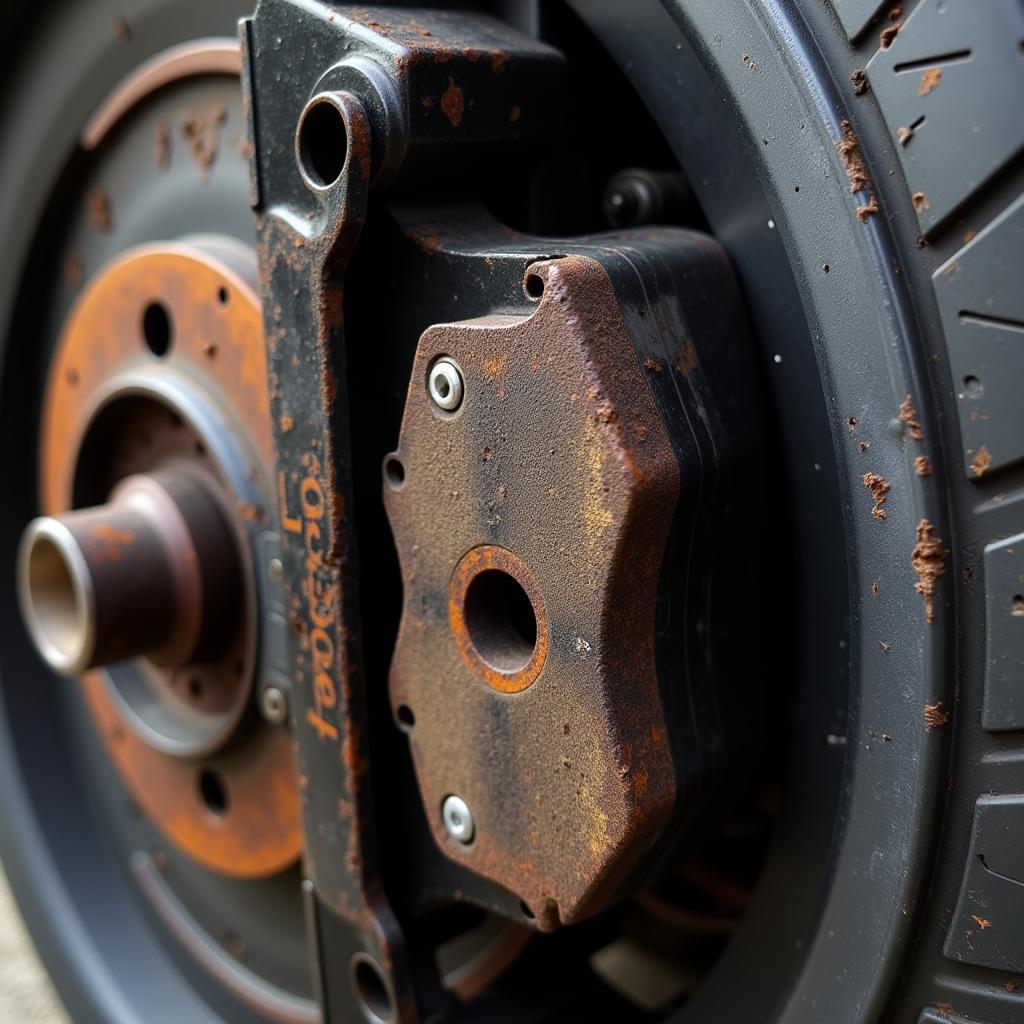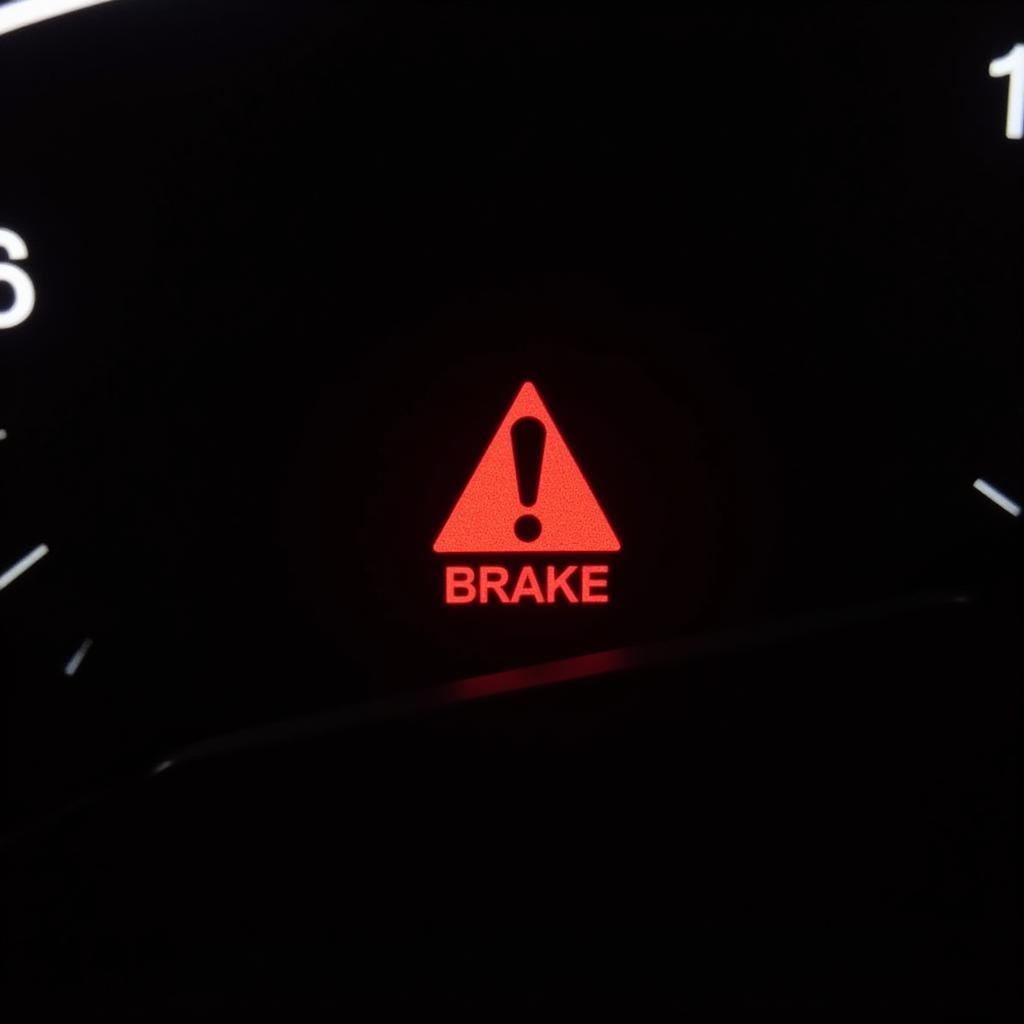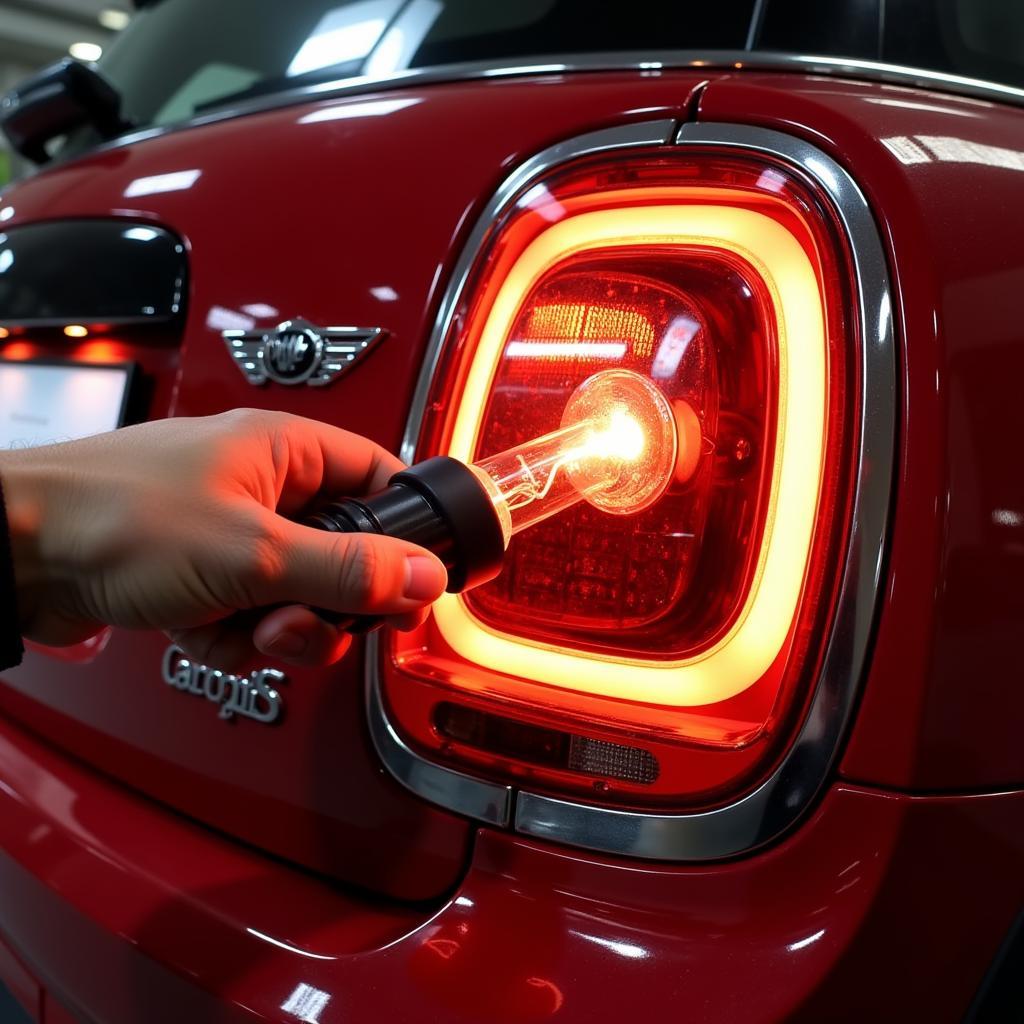The dreaded “brake wear” warning light illuminating your Mercedes A Class dashboard can be a cause for concern. This article delves into the reasons behind the mercedes a class brake wear warning, offering troubleshooting tips and solutions to help you address this issue effectively. We’ll explore everything from simple fixes to more complex scenarios, empowering you to maintain optimal braking performance and safety. Just after the introduction, you might find the information about the Mercedes E Class brake wear warning relevant. See our article on mercedes e class brake wear warning.
What Triggers the Mercedes A Class Brake Wear Warning?
The most common culprit behind the brake wear warning is, unsurprisingly, worn brake pads. These pads are designed to wear down over time, and when they reach a certain thickness, a sensor triggers the warning light. However, other issues can also activate this warning, including faulty sensors, damaged wiring, or even low brake fluid. Understanding these different possibilities is crucial for effective troubleshooting.
Brake Pad Wear: The Usual Suspect
Your A Class brake pads are essential components ensuring safe and efficient stopping power. As you apply the brakes, friction between the pads and rotors generates the force needed to slow down and stop your vehicle. Over time, this friction causes the pads to wear down. When the pad material reaches a critical thickness, a small sensor embedded within the pad makes contact with the rotor, triggering the warning light on your dashboard.
 Worn Brake Pads on a Mercedes A Class
Worn Brake Pads on a Mercedes A Class
Beyond Worn Pads: Other Potential Causes
While worn brake pads are the most frequent cause, other factors can also trigger the brake wear warning. A malfunctioning brake pad wear sensor can send a false signal, illuminating the warning light even with sufficient pad material. Damaged wiring connecting the sensor to the vehicle’s electrical system can also disrupt the signal and cause the warning to appear. Additionally, low brake fluid levels can sometimes trigger the brake warning light, as it can indicate a potential leak or other braking system issue. For those with a Mercedes B Class, you might find our article on the mercedes b class brake wear warning helpful.
Diagnosing the Problem: A Step-by-Step Guide
- Visual Inspection: Start by visually inspecting your brake pads. Look through the wheel spokes to assess the thickness of the pad material. If the pads appear significantly thin, they likely need replacement.
- Check Brake Fluid Level: Open the hood and locate the brake fluid reservoir. Check the fluid level against the minimum and maximum markings. If the level is low, top it off with the recommended brake fluid type for your A Class. However, persistently low brake fluid indicates a potential leak, requiring professional attention. You can check our article on whether can low brake fluid turn brake warning light on.
- Sensor Check: If the brake pads and fluid levels appear normal, the brake pad wear sensor might be faulty. A qualified technician can test the sensor’s functionality using a multimeter to determine if it’s sending the correct signals.
- Diagnostic Scan: A professional diagnostic scan using specialized equipment can pinpoint the exact cause of the warning light. This scan can identify sensor malfunctions, wiring issues, or other problems within the braking system.
Resolving the Issue: From DIY to Professional Help
Replacing worn brake pads is a relatively straightforward task for those with some mechanical aptitude. However, dealing with faulty sensors, wiring issues, or more complex braking system problems requires the expertise of a qualified Mercedes technician. For guidance on the general brake pad warning light in Mercedes vehicles, see our article on brake pad warning light mercedes.
“Regular brake maintenance is crucial for ensuring your safety on the road,” says David Miller, a seasoned automotive electrical engineer. “Don’t ignore warning lights. Addressing them promptly can prevent more significant and costly repairs down the line.”
Preventing Future Issues: Proactive Brake Maintenance
Regular brake inspections, typically every 10,000 to 12,000 miles, are essential for preventing brake wear issues. During these inspections, a technician will assess the condition of your brake pads, rotors, calipers, and other components. They can identify potential problems early on, preventing costly repairs and ensuring optimal braking performance.
“Remember, your brakes are your lifeline on the road,” adds Sarah Johnson, a certified Mercedes technician. “Proactive maintenance not only keeps your A Class performing at its best but also ensures your safety and the safety of others.” You might find our article about the 2005 audi a6 brake pad warning light useful for comparison and understanding different brake warning systems.
Conclusion
The mercedes a class brake wear warning is a crucial indicator of potential braking system issues. Understanding its causes and taking appropriate action are essential for maintaining the safety and performance of your Mercedes A Class. From simple brake pad replacements to more complex repairs, addressing the warning promptly can prevent further complications and ensure your peace of mind on the road.
FAQ
-
How often should I replace my brake pads? Brake pad lifespan varies depending on driving habits and conditions. Typically, they need replacement every 25,000 to 70,000 miles.
-
Can I drive with the brake wear warning light on? While you might be able to drive for a short distance, it’s highly recommended to address the issue immediately. Driving with worn brake pads can compromise your stopping power and potentially damage other brake components.
-
How much does it cost to replace brake pads on a Mercedes A Class? The cost varies depending on location and the specific parts used, but expect to pay between $200 and $500.
-
What is a brake pad wear sensor? It’s a small wire embedded within the brake pad that triggers the warning light when the pad material reaches a critical thickness.
-
Can I replace the brake pad wear sensor myself? While it’s possible, it’s often recommended to have a qualified technician perform the replacement to ensure proper installation and functionality.
-
What are the symptoms of worn brake pads? Common signs include squealing or grinding noises when braking, reduced braking performance, and a pulsating brake pedal.
-
How can I prolong the life of my brake pads? Avoid aggressive driving, anticipate stops, and have your brakes inspected regularly.


